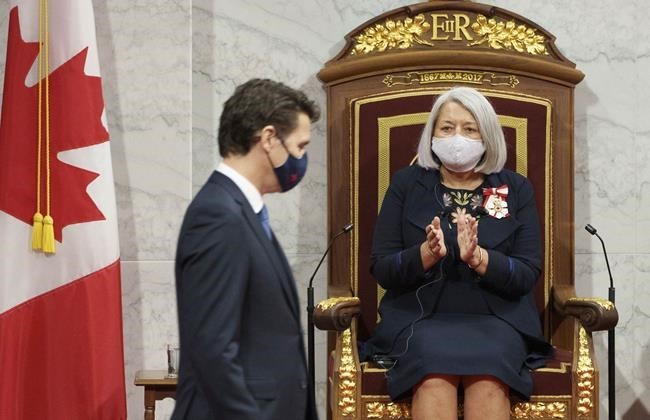OTTAWA ‚Äî It's not like in the United States, where election day occurs like clockwork on the same week every four years ‚Äî and has since before Canada was a country. North of the 49th parallel, the mechanics of calling voters to the polls are a little more complicated, with convention and the Constitution each playing a part.¬Ý
With a federal campaign expected to kick off this Sunday, here's a look at how an election is called in Canada:
The first step
The prime minister heads over to Rideau Hall to request the Governor General dissolve Parliament.
If opposition MPs pass a motion stating they've lost confidence in the government, that too would prompt Justin Trudeau to pay a visit to the Queen's representative — Mary Simon, who was sworn in on July 26. This scenario played out during the last minority government in 2011, triggering an election that handed Stephen Harper a majority.
A fixed-date election — federal legislation dictates the next one must take place on or before Oct. 16, 2023 — would also require a prime ministerial door knock at 1 Sussex Drive.
But neither a deadline nor a direct shove from the House of Commons are pushing Trudeau toward the viceregal grounds. Instead he can exercise his prerogative as head of government to advise the Governor General for dissolution.
What if Simon says no?
Constitutionally, the Governor General — as the viceroy — is the only one authorized to call a new election. Conventionally, she only does so when advised by the prime minister.
"Put heavy quotation marks around the word 'advise,'" says Peter Russell, professor emeritus of political science at the University of Toronto.
While only one governor general has refused that "advice" — Lord Byng turned down Mackenzie King's request in 1926, setting off a constitutional crisis — other viceregal representatives have found cause to spurn their first ministers.
In 2017, British Columbia's lieutenant-governor said no to then-premier Christy Clark's suggestion to dissolve the legislature and trigger another election less than eight weeks after voters went to the polls.
A governor general might also reasonably reject a dissolution request if other parties in the House of Commons could form government, Russell said.
No bucking the Westminster system¬Ý
Canada's system of Parliament is derived from the United Kingdom's, whose roots go back eight centuries during which Parliament gradually whittled away the once overweening power of the monarchy in favour of representative democracy.
The formal structure of Crown and Parliament remained, however.
"In that long tradition, the Crown called the first parliament in the 13th century," Russell said. "And we've continued that."
With Parliament dissolved, who's running the show during an election campaign?
The prime minister and cabinet remain in office throughout the race — and briefly after it — to keep the ship of state on course and respond to major events or emergencies.
But their official roles are sharply curtailed — again, by convention: the "caretaker convention."
Eventually spelled out in a set of guidelines released by the Privy Council Office in 2015, caretaker mode means government activity scales down to matters that are "routine, or non-controversial, or urgent and in the public interest, or reversible by a new government without undue cost or disruption, or agreed to by opposition parties."
"They're not supposed to be out making decisions that would bind a future government," says Lori Turnbull, director of the School of Public Administration at Dalhousie University.
"And because there's no House to give them confidence, the government doesn't have the authority to act. But obviously we don't want everything to shut down."
New policies are put off and big decisions delayed as ministers hit the hustings. Much of their staff go on leave to campaign across the country, leaving behind a skeleton crew. Cabinet also steers clear of judicial appointments and new postings to tribunals, advisory boards and Crown corporations.
As with many conventions, the limits of caretaker mode are not precisely defined. In 2004, critics said then-prime minister Paul Martin stepped over the line when he attended the annual G8 meeting, sparking accusations he used the office to boost his profile during the election campaign.
The 'writ drop'
Dropping the writ refers to when the Governor General gives the go-ahead and issues writs of election.
But unlike an album or a dinner plate, writs are not, in fact, dropped.
A writ is a formal order instructing the returning officer in each riding to hold a vote to elect an MP. It specifies the deadline for candidate nominations as well as election day in all 338 ridings — one writ per district.
"The Governor General issues a proclamation that basically starts the process for an election. The writs are then prepared by the chief electoral officer and sent out," Turnbull says. They are returned to the chief electoral officer following the election.
This report by The Canadian Press was first published Aug. 13, 2021.¬Ý
Christopher Reynolds, The Canadian Press

